
Texas A&M University (TAMU), a long-standing ARCUS Member Institution, is a Land Grant, Sea Grant and Space Grant institution with its main campus in College Station, Texas. TAMU is dedicated to the discovery, development, communication, and application of knowledge in a wide range of academic and professional fields. With more than $700 million in research expenditures generated by faculty-researchers, the school has over 58,000 students—including 12,000 graduate students—enrolled in 10 academic colleges. The University supports several Arctic research efforts including those in the Colleges of Geosciences, Agriculture and Life Sciences, and Liberal Arts.
Arctic Ocean Research Spotlight
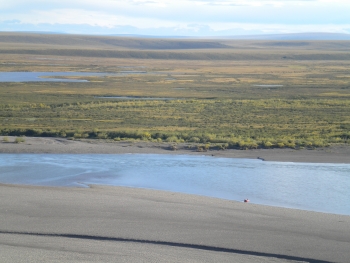
Franco Marcantonio, Department of Geology and Geophysics, College of Geosciences
Marcantonio's research focuses on application and development of isotope and trace element geochemical proxies to further understand past and present Earth surface processes. Marcantonio, Tom Bianchi (University of Florida), TAMU PhD graduate Katie Schreiner, and colleagues at the University of Texas are currently developing a detailed paleoclimate record from sediment cores taken in lagoons adjacent to rivers emptying into the Beaufort Sea. Initial results suggest these cores, which contain high quality sediment records, hold a history of system response to climate change on the adjacent continent and terrestrial-marine linkages. They record input from three distinct sources: rivers draining the Brooks Range and the Arctic Coastal Plain, eroded shoreline deposits, and marine production (e.g., phytoplankton, ice algae, benthos), each of which have distinct mineral and particulate organic carbon composition. The research team believes the temporal variations observed in the cores will provide proxy information about climate changes in the source areas.
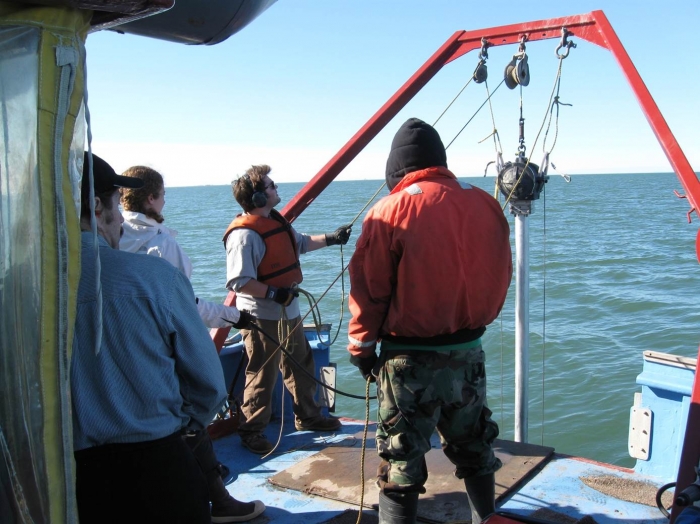
For more information, see:
http://geoweb.tamu.edu/profile/FMarcantonio.
Arctic Atmospheric Research Spotlight
Sarah Brooks, Department of Atmospheric Sciences, College of Geosciences
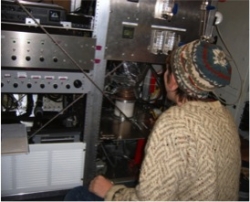
Brooks' research focuses on understanding how natural and anthropogenic aerosol particles influence aerosol-cloud interactions on local to global scales. Her research group uses novel analytical techniques to observe ice cloud nucleation under atmospheric conditions and explore how concentration, chemical composition, surface chemical reactions, and shape of aerosols impact cloud formation and properties.
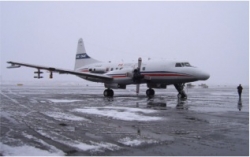
In a recent research effort, Brooks and others analyzed ambient particles and the dry residuals of mixed-phase cloud droplets and ice crystals that were collected near Barrow, Alaska. Results show that cloud droplet residuals differ from the ambient particles in both size and composition, suggesting that both properties may impact the cloud-nucleating ability of aerosols in mixed-phase clouds and that that chemical processing of aerosols may improve their cloud-nucleating ability.
For more information, see:
http://atmo.tamu.edu/profile/SBrooks
Arctic Terrestrial Ecosystem and Permafrost Research Spotlight
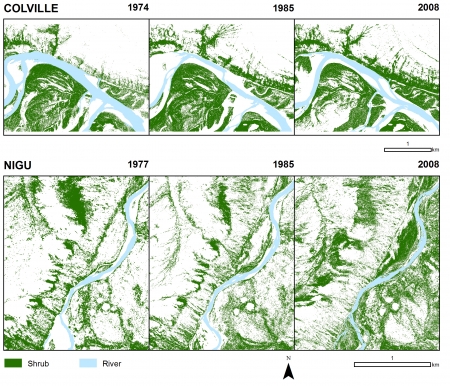
David Cairns, Department of Geography, College of Geosciences
Cairns' research concentrates on the impacts of climate change on vegetation at short and long time scales in a variety of environments. His work has focused on the transition zones between different vegetation types, including in tundra environments on the North Slope of Alaska. In recent work, Cairns and PhD student Adam Naito studied the association between topographically derived hydrologic characteristics and shrub cover change in five areas in northern Alaska between the 1970s and 2000s. Results show that shrubs are preferentially expanding into areas where the potential for moisture accumulation or drainage is greater.
For more information, see:
http://geography.tamu.edu/profile/dcairns.
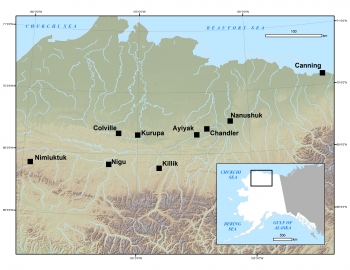
To learn more about TAMU and its associated research programs, please visit their website:
http://www.tamu.edu/about/departments.html.
For questions, please contact Dr. David Cairns, ARCUS Board of Directors, at: cairns [at] tamu.edu.
